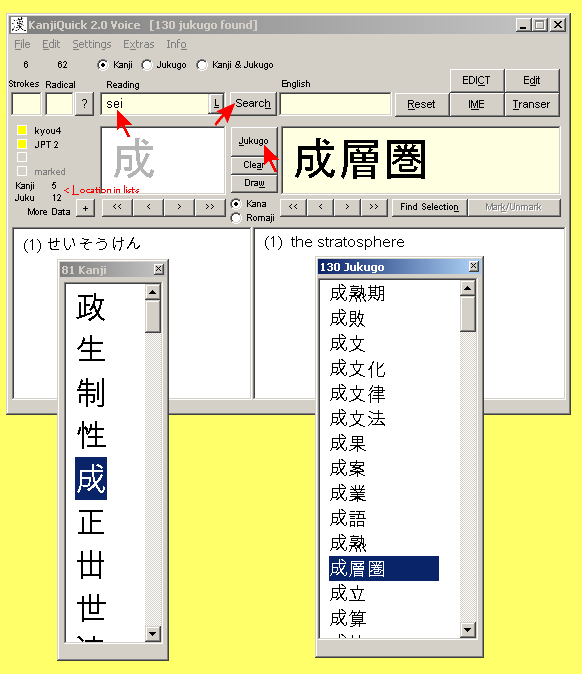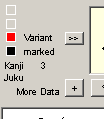| KanjiQuick Voice Documentation |
| [ Home Page | Downloads | Registration ] |
|
[ Contents ] Kanji and jukugo browsingFirst, input all your search criteria. In the example below, the reading "sei" was entered into the Reading input box . Next, click . Select a kanji from the Kanji List . If you want to see the compounds that use the selected kanji, click the button. If a KanjiQuick search returns more than one kanji or jukugo matching your search criteria, separate Kanji and Jukugo windows will open for each list as needed. You may use the left- and right-arrow buttons below the Kanji and Jukugo display boxes to navigate through each window list.
You may select any kanji or jukugo entry from the Kanji or Jukugo windows by clicking to the left of your selection. You may select an individual kanji in any window by double-clicking directly on it. The selected kanji or jukugo will then be displayed with all corresponding data in KanjiQuick's main Kanji or Jukugo display box . The total number of entries in the list is displayed in the title bar of each window. The number of the entry selected can be found to the lower-left of the Kanji display box , beside "Kanji" and "Juku," respectively. In the example below, the third entry in the Kanji list is selected. Also, the kanji selected is a variant which is rarely found in modern texts. Click the button to the right of the word "Variant" to display all variants of this character. The square to the left of "marked" is black when the kanji displayed has been previously marked by you.
|
| [ Contents ] |
menu items, sliders | | Text input boxes | | display boxes | | separate windows | ||
|
Copyright © Program coding and design by Kay Genenz on behalf of JaF, Duesseldorf, Germany 2002. |

